When Juan Ponce de León landed at Dry Tortugas islands in 1513, he and his crew caught hundreds of giant sea turtles, in addition to now-extinct Caribbean monk seals, and few thousand seabirds. They subsequently referred to the islands as The “Tortugas” or The Turtles in English. Soon after, ship going visitors also noticed a distinct absence of fresh water on the island, and thus added “Dry” to the archipelago’s name.
Not to be confused with that Tortuga of piratical infamy near Haiti, remote Dry Tortugas National Park resides a distant seventy miles west of Key West. Cradled in cerulean sub-tropical waters, the seven-key archipelago (Garden, Loggerhead, Bush, Long, East, Hospital, and Middle) can only be accessed by boat or by seaplane. Unlike most National Parks, nearly 99% of the park is underwater and harbors the least disturbed coral reefs in the Florida Keys.
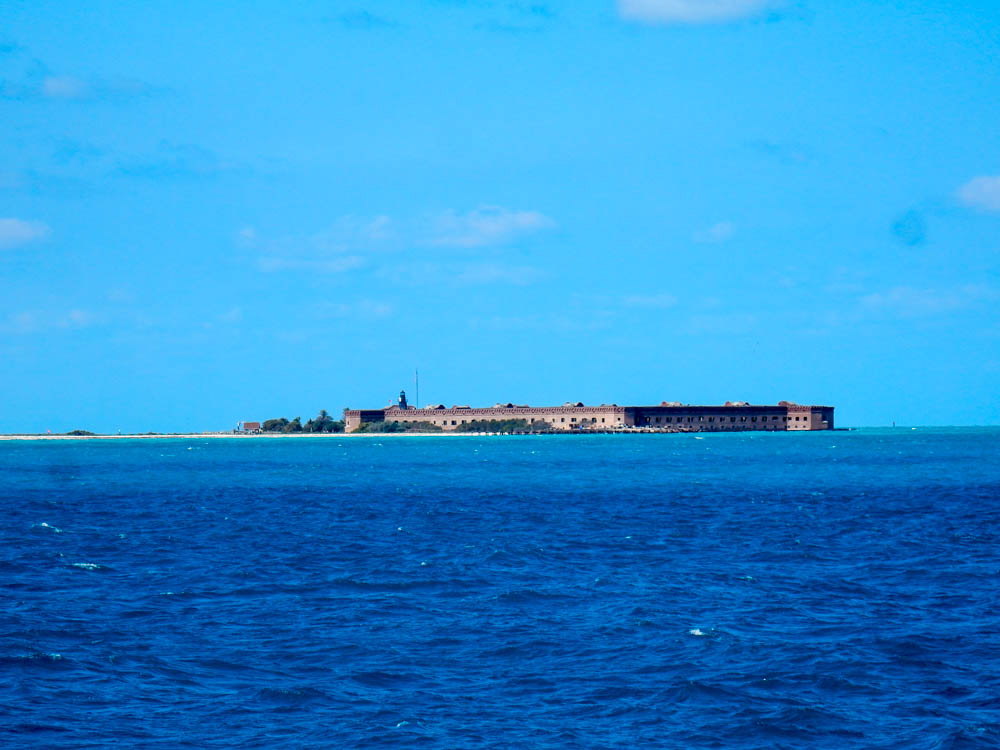
Dry Tortugas & Fort Jefferson Garden Key from a Distance
Getting to Dry Tortugas National Park
So those 70 miles to Dry Tortugas do not come cheap. Many visitors come by the Yankee Freedom III Ferry, a high-speed Incat-designed catamaran. Day trips can cost as much as $175 per Adult, and overnight camping trips $195 per adult. The overnight camping trips are worth it, but they book early and fast during peak season. The plus side for taking the ferry is that breakfast and lunch are included with your ticket. If you decide to go overnight, bring a sea kayak so you can visit other islands and pristine snorkeling sites.
Key West Seaplane Adventures provides daily flights to Dry Tortugas. They offer half-day trips at $329 per adult and Full-Day at $578. With only 40 minutes one-way to reach Dry Tortugas, it’s no wonder people prefer to take the seaplane. If you can afford it, I would say go for it, but be aware they do not offer any overnight packages and you must leave the island on your scheduled return flight.
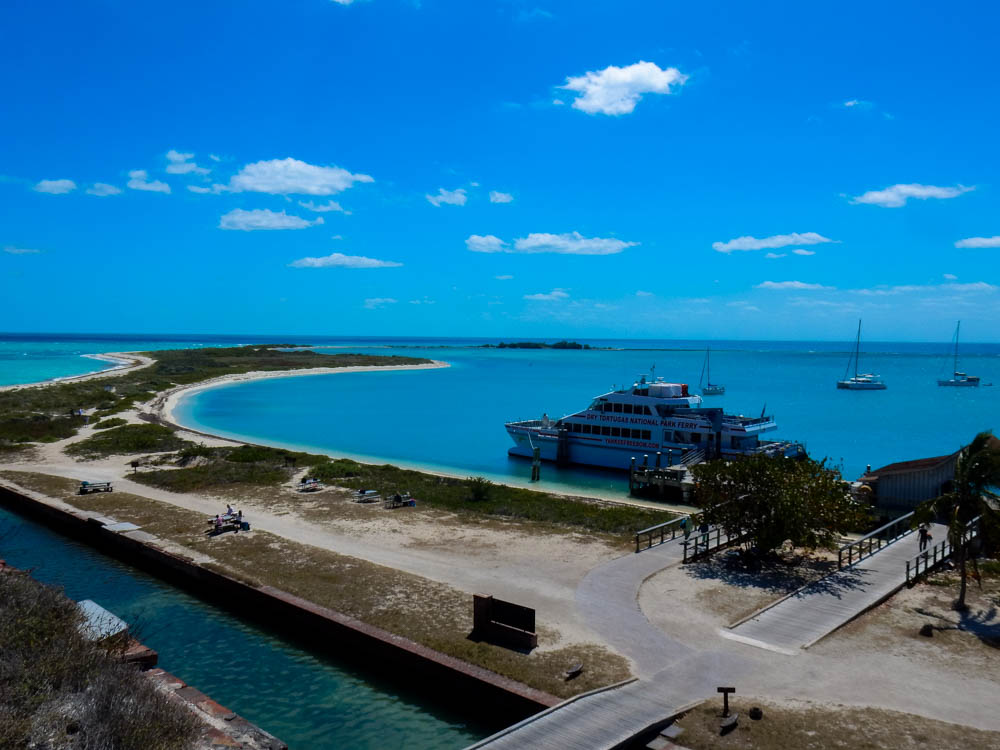
Our Ferry Docked
Other options include chartering your own passage from one of the many operators that service Dry Tortugas. The main advantage of taking a charter is that you can visit the other islands within Dry Tortugas National Park. The downside is the cost can be as much as a seaplane ride and in some cases thousands of dollars for multi-day tours.
The final option is to bring your own boat if you are lucky enough to have one. Permits are free and can be obtained in person at the Garden Key Visitor Center or at Dry Tortugas National Park Headquarters Office, both located within Fort Jefferson. The park does not offer any food, water, nor fuel on Dry Tortugas, so you have to plan accordingly.
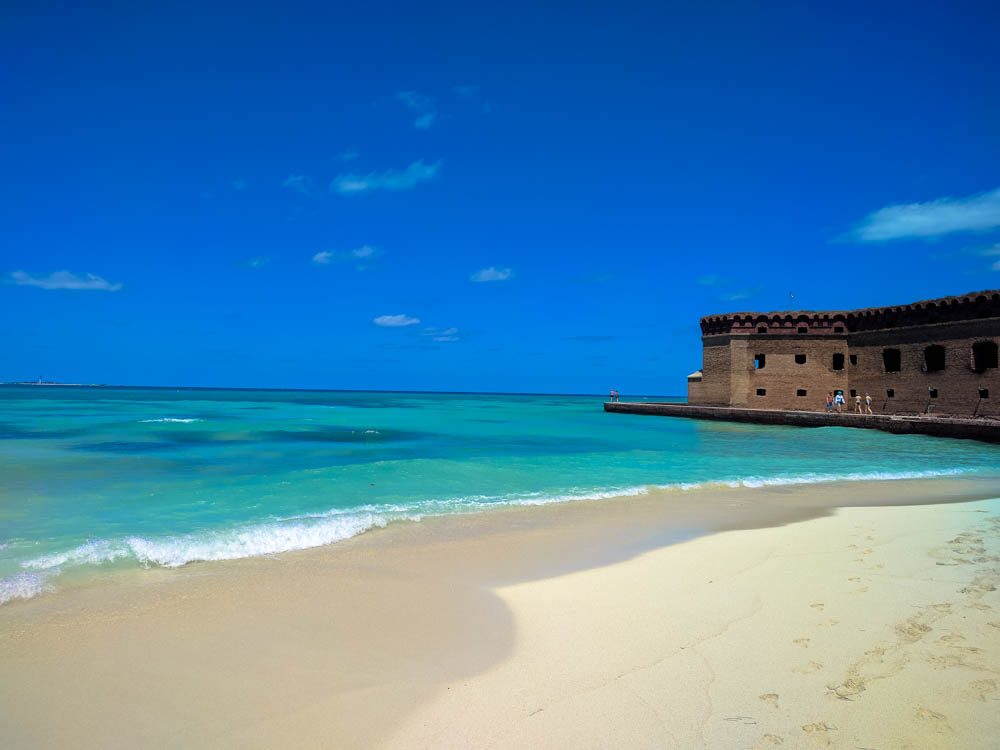
South Beach one of two beaches on Garden Key
Snorkeling Sites
Dry Tortugas islands is a fantastic place for snorkeling and diving. Colorful Tropical corals with just as many schools of fish to match.
Dock Ruins & Moat, Garden Key
On Garden Key, there are three primary spots for snorkeling: South coaling dock ruins, North coaling dock ruins, and the outer moat wall. Among the pilings, divers will mostly find small fish, colorful corals, and the occasional tarpon and barracuda. On the moat wall, you’ll be amazed at reef squid, nurse sharks, hogfish, and more hiding among the coral crusted anchor chains and cement barrels. If you are camping, snorkel the moat wall at night with a strong dive light. You’ll get a rare glimpse of night creatures such as octopus and starfish. Fish remain docile at night and can be approached much closer than during the day, just be sure not to shine your light directly at the fish.
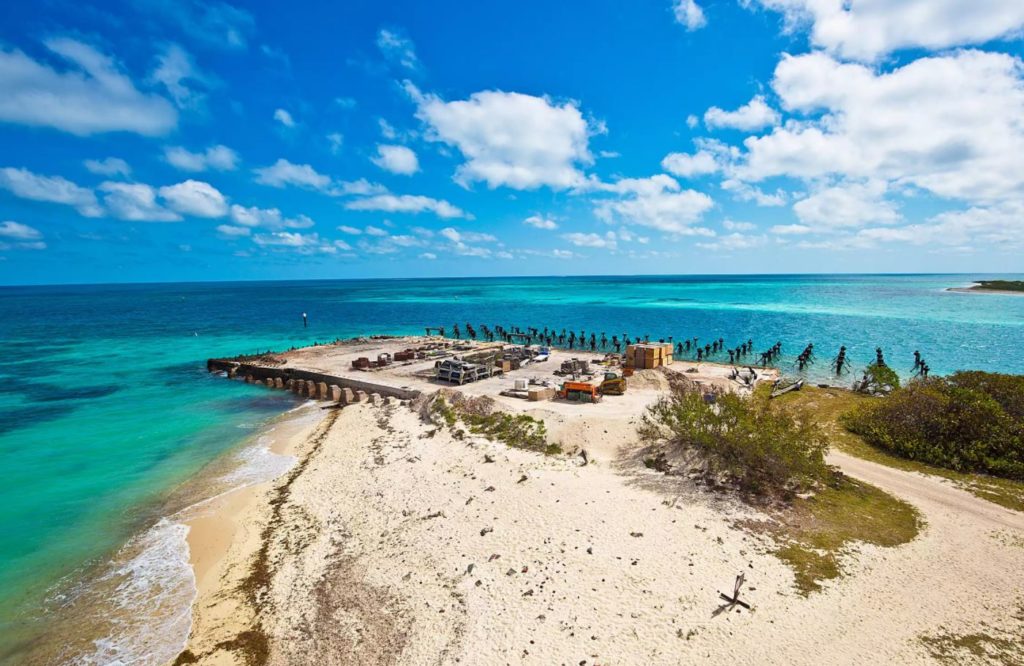
North coaling dock ruins
Texas Rock, Garden Key North
Texas Rock is the place to be for underwater photographers, experienced snorkelers, and intermediate divers. Located directly north of Garden Key at N24 40.814 W82 53.120. Here you’ll find elkhorn, staghorn, and almost every species of stony coral. A riot of orange dominates here: orange elephant ear coral, orange crinoids, and orange ball sponges. Expect to see jacks, hogfish, barracuda, and sharks at this deep site.
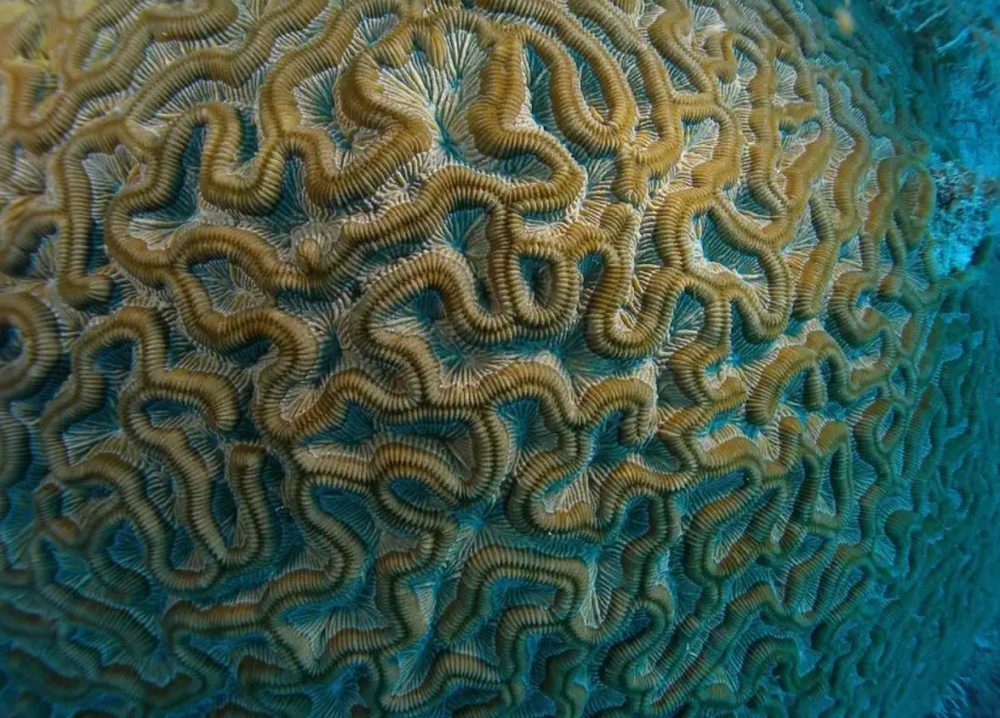
Texas Rock underwater photographers playground
Little Africa Reef, Loggerhead Key North
If you have a kayak, raft, or brought your own sailboat, then go to Little Africa Reef near Loggerhead Key. This is a fantastic place where you’ll find larger coral heads surrounded by all kinds of colorful, tropical fish, a variety of juvenile barracuda and spiny lobster. The water in Little Africa is calmer than most in the area, which makes it good for kids too.
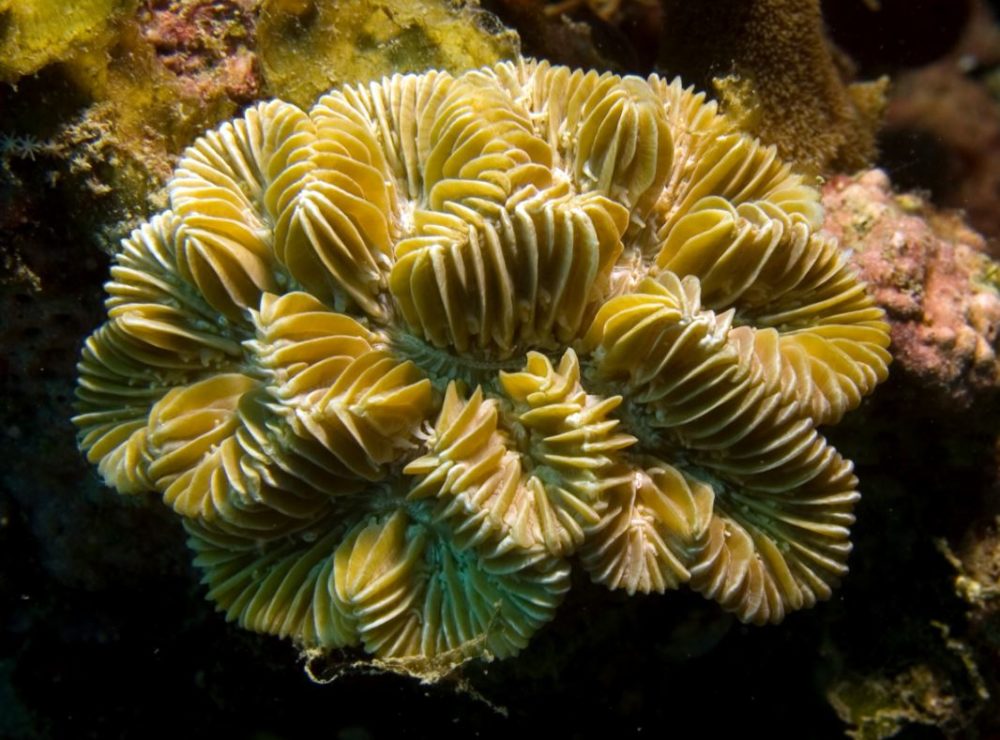
Find gorgeous corals at Little Africa Reef
Windjammer Wreck, Loggerhead Key South West
Located just south-west of Loggerhead Key at coordinates N24 37.461 W82 56.564, the Windjammer Wreck is great for snorkeling and novice diving. Built in 1875, the three-masted, iron-hulled, sailing shipwrecked on Loggerhead Reef in 1901. Before diving this site, be sure to pick up a laminated underwater map at the visitor center. This map will provide you with a self-guided tour of the wreck and allow you to make sense of what you are seeing. Depths on this site range from zero feet, where a small piece of wreckage actually breaks the surface, to 20 feet. The best visibility on the site is during flood tide.
Exploring Fort Jefferson
Construction of Fort Jefferson (named after the third President, Thomas Jefferson) started in early December 1846 and finally finished in in 1875. The fort’s purpose was to protect one of the most strategic deepwater anchorages in North America. By fortifying the spacious harbor, the United States maintained an important “advance post” for ships patrolling the Gulf of Mexico and the Straits of Florida.
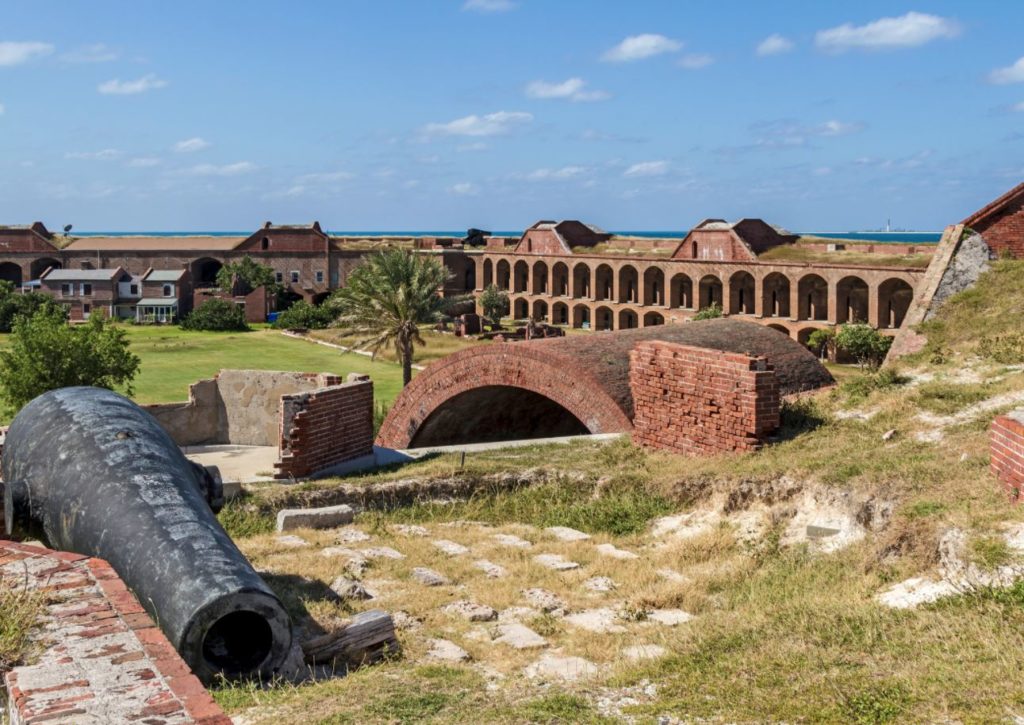
View from top floor of Fort Jefferson
There are two main trails in Fort Jefferson: the Moat Trail, which circumnavigates the whole fort, and the Fort Wall Trail, which takes you through all three levels of the fort wall. If you go with the self-guided tour, as we did, you’ll see 25 locations, learn about its history, and hunt for fascinating artifacts.
On the Moat trail, we got a quick glimpse of the American Crocodile who was living there for 14 years. He was blown in on a hurricane and set up residence within the moat walls. As of May 2017, they moved the croc to Everglades National Park, for his own safety as well as visitors.
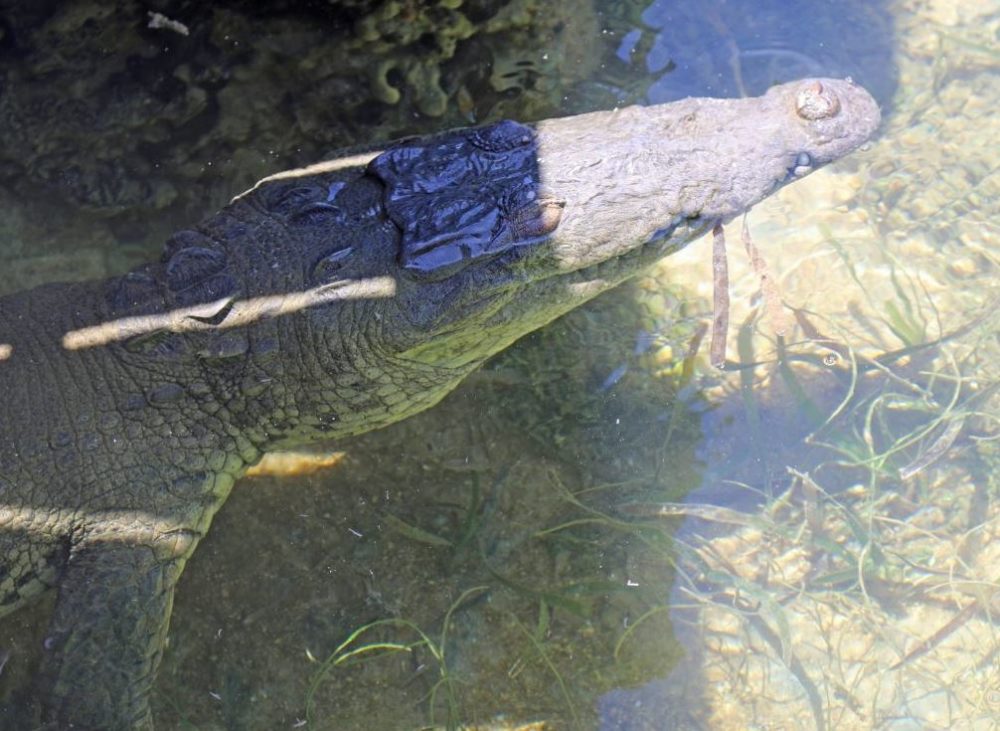
After 14 years of living in the moat, this croc was moved to the Everglades
The Hot Shot Furnace
The most interesting history goes to the Hot Shot Furnace. The cannon balls would be loaded in the opening at the front and gravity would feed them down iron rails to the lower opening at the rear. As they rolled down, the fire would heat the cannon balls until they were red hot. At the lower end, gun crews would use large tongs to take the red hot cannon balls from the hot shot furnace to their guns. Before loading the ball, damp wadding would be shoved into the cannon barrel, preventing the hot projectile from prematurely igniting the black powder. They would then fire the heated cannon ball so it would skip across the surface of the water like a stone, making sure the impact would damage a ship near the waterline, ensuring maximum damage.
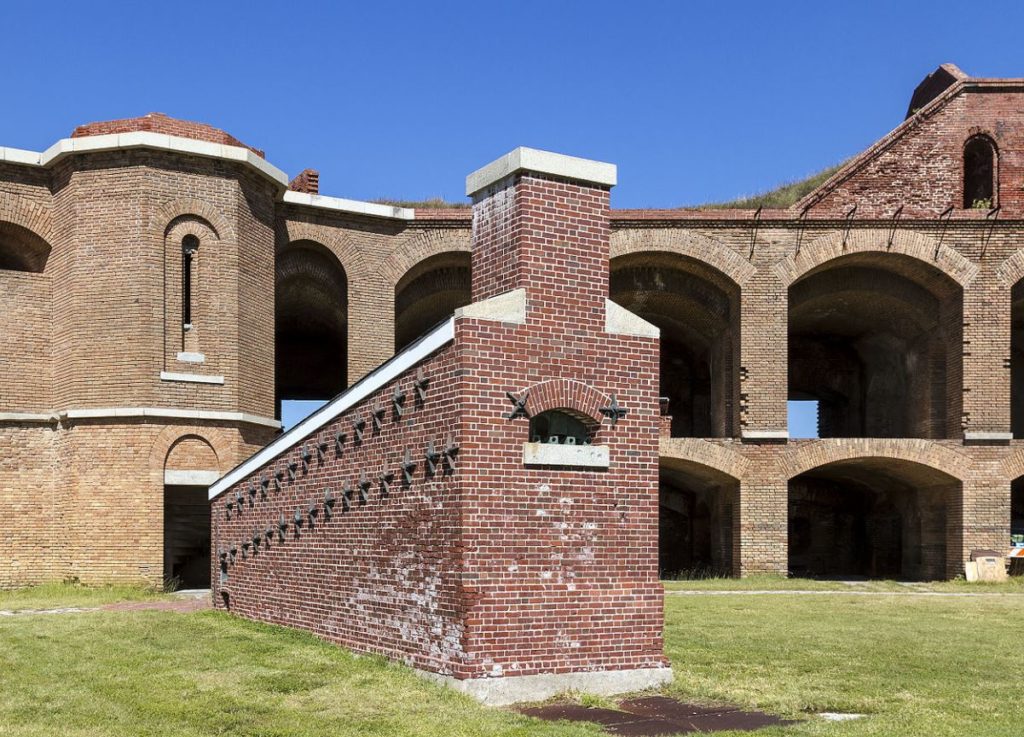
Hot Shot Furnace – Making Great Balls of Fire since 1875
Bush Key Birds
During the late fall and early winter season affords a special opportunity to explore a rare and pristine subtropical island. For the rest of the year, Bush Key is home to thousands of breeding seabirds not found elsewhere in the continental United States. Once the nesting wildlife has vacated Bush Key, visitors are allowed to stroll along the shoreline.
When we arrived we well into the breeding season and thus not able to visit Bush Key. From the east side of the fort wall and with a good pair of binoculars, we could spot Magnificent Frigatebird, booby birds, sooty terns, and noody birds; a real birders’ treat.
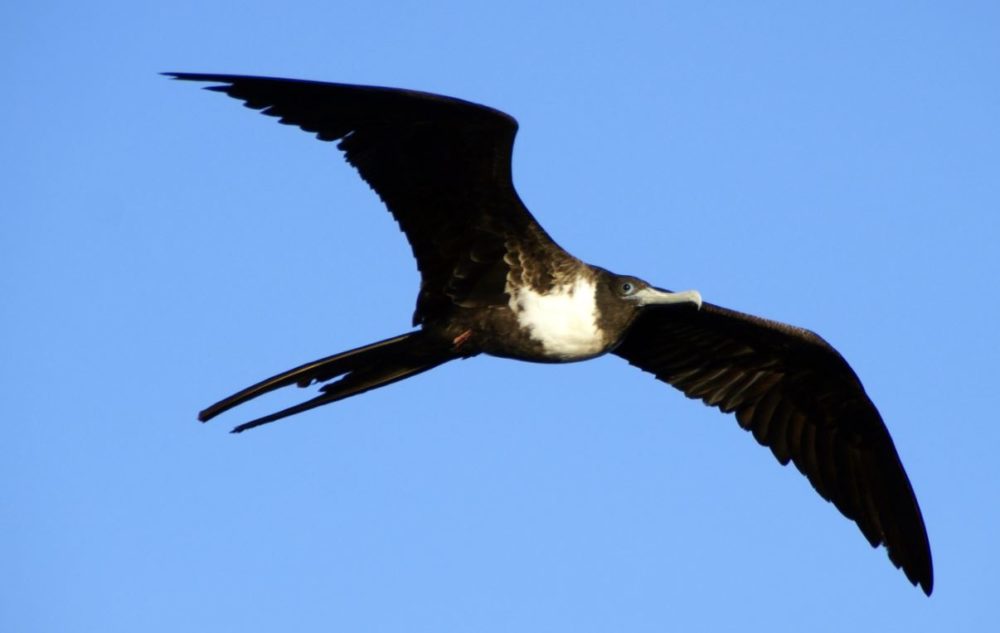
Magnificent Frigatebird
Side Note: Best Time to Visit
Hands down, the best time to visit Dry Tortugas National Park, is during the dry season. November to April and averages only 2.17 inches of rainfall per month. Temperatures range from the mid-60s to the mid-70s, and humidity is bearable at about 57 percent.
Sadly, winter also comes with high winds, so you have to watch weather reports. High winds will create high waves and thus affect diving and snorkeling activities. If you’re taking a boat, you’ll want to take some Dramamine before an hour before boarding.
The summer season is oppressive and wet, but many folks still find it worthy to visit then. Then there’s the possibility of hurricanes from June to November.
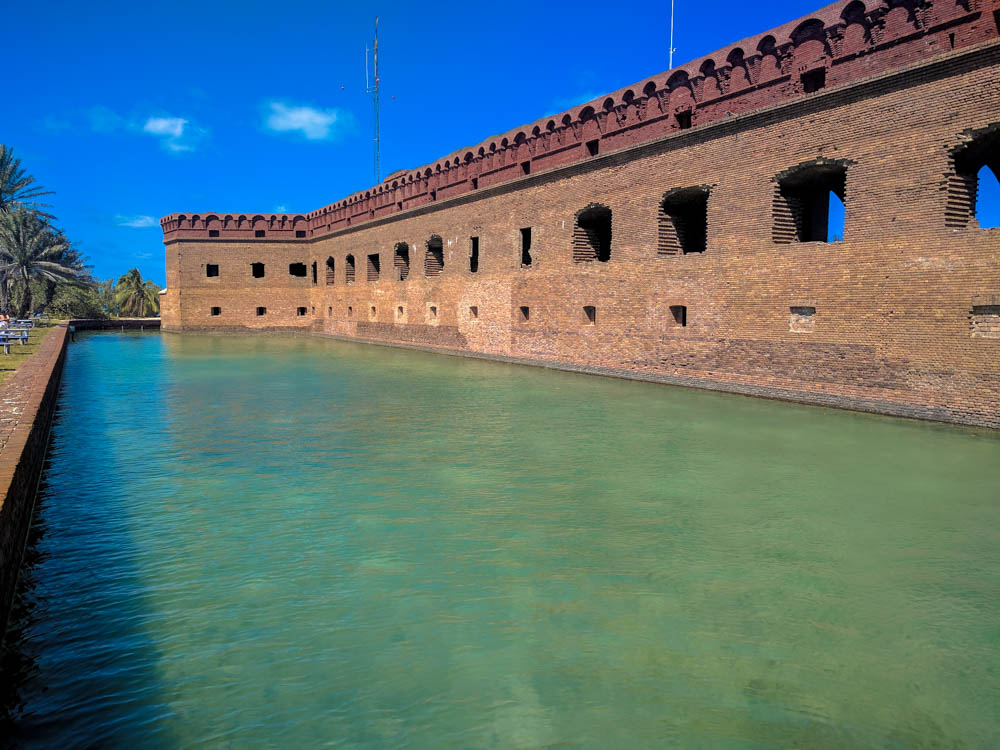
The moat wall, or counterscarp, was also intended to protect the for from wave action and storm surge
Is Dry Tortugas Worth It?
I certainly think it is! With its spectacular coral reefs overflowing with aquatic life, fantastic bird viewing in April-May, and the flood of turtles that come to nest during May and June. If you can, go camping and bring snorkel gear and a kayak or two. And although you have to pack out everything you packed in, including garbage, you won’t regret it.
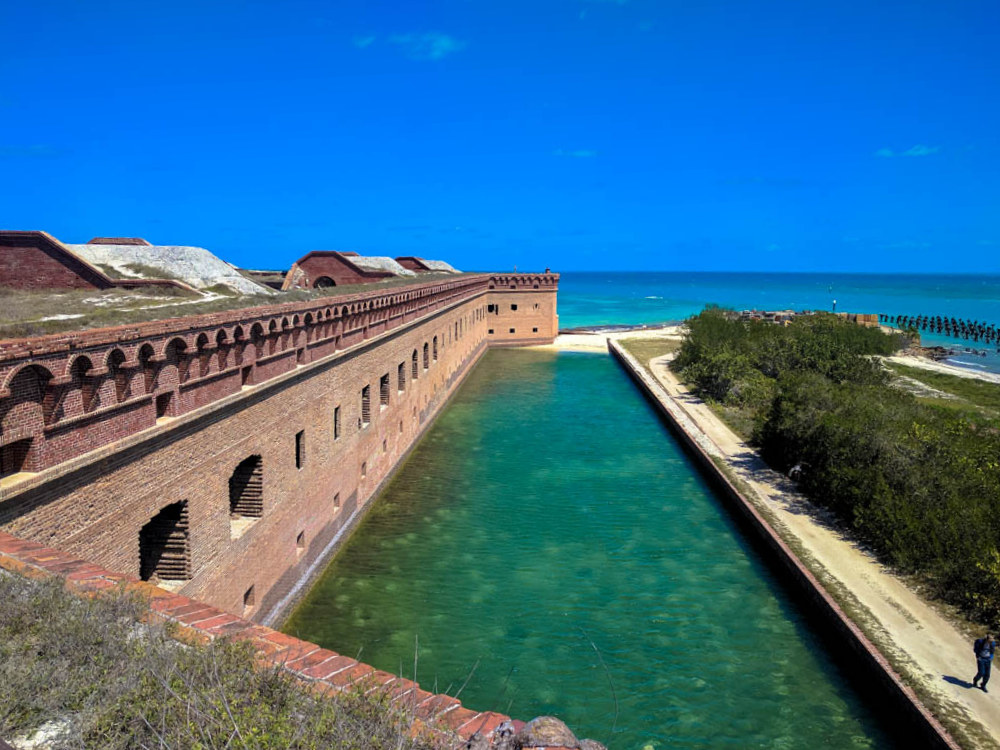
The 70-foot-wide moat – a barrier to would-be attackers attempting to gain access to the fort
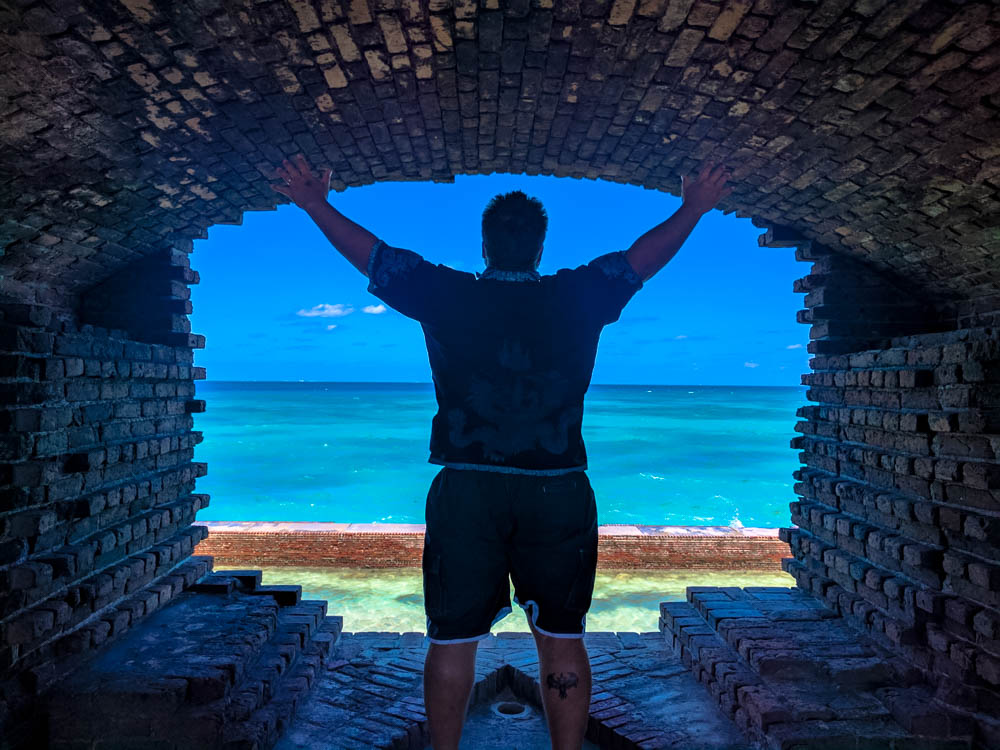
There are many windows of blue in the fort
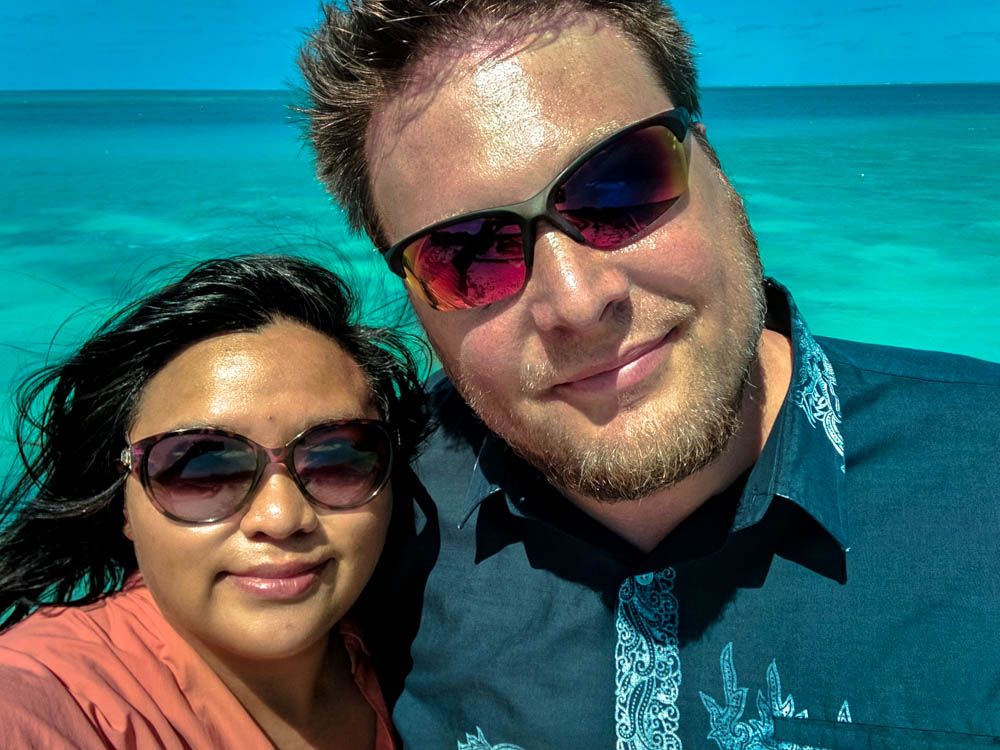
Happy on Dry Tortugas NP
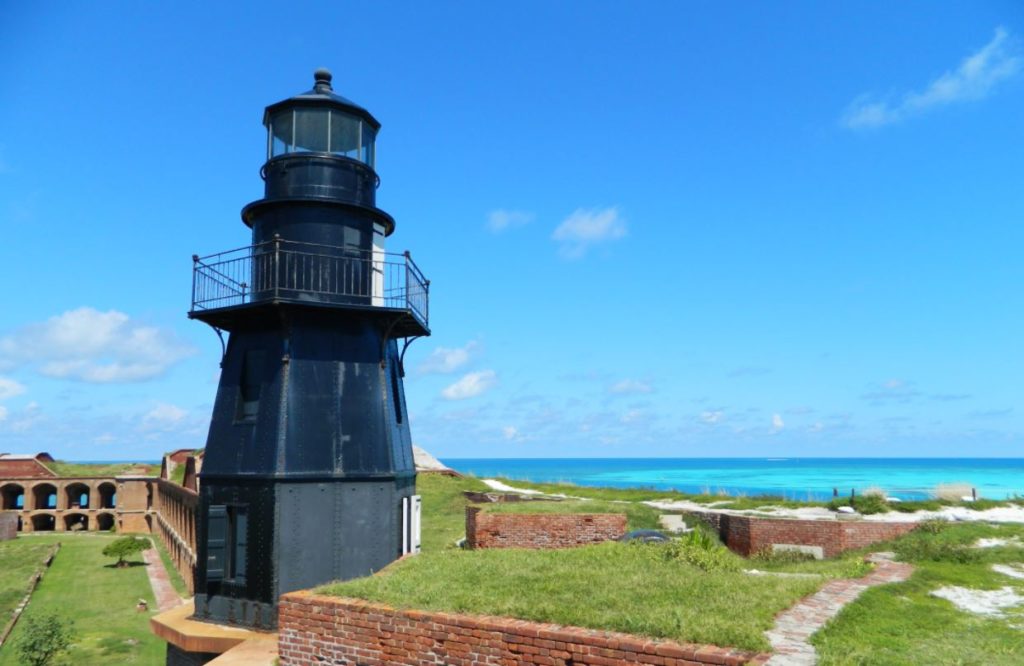
Harbor Light (Third Level). Constructed in 1876, this boilerplate iron harbor light was built to replace the 1826 light that had been damaged by hurricanes.
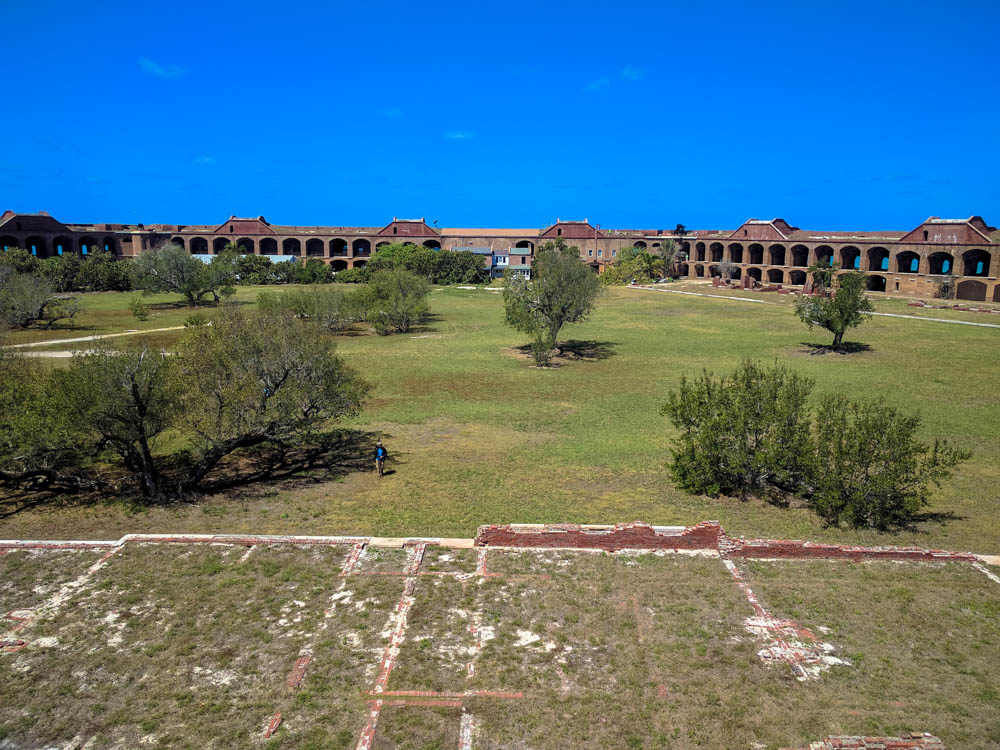
Looking down into the Fort
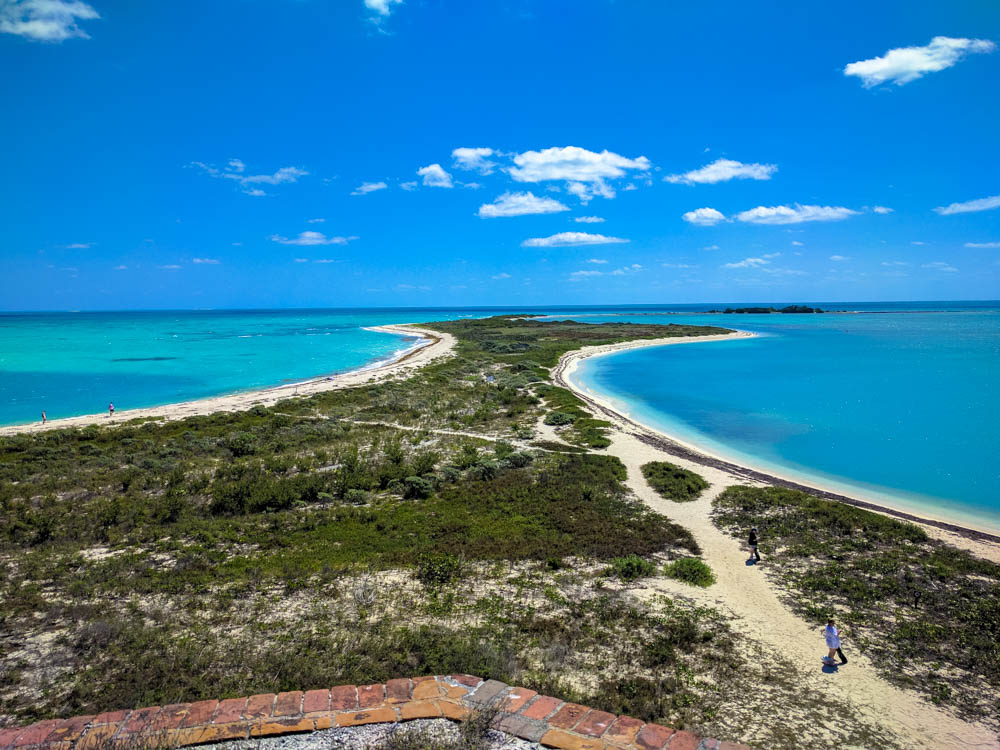
Bush Key – haven for birds
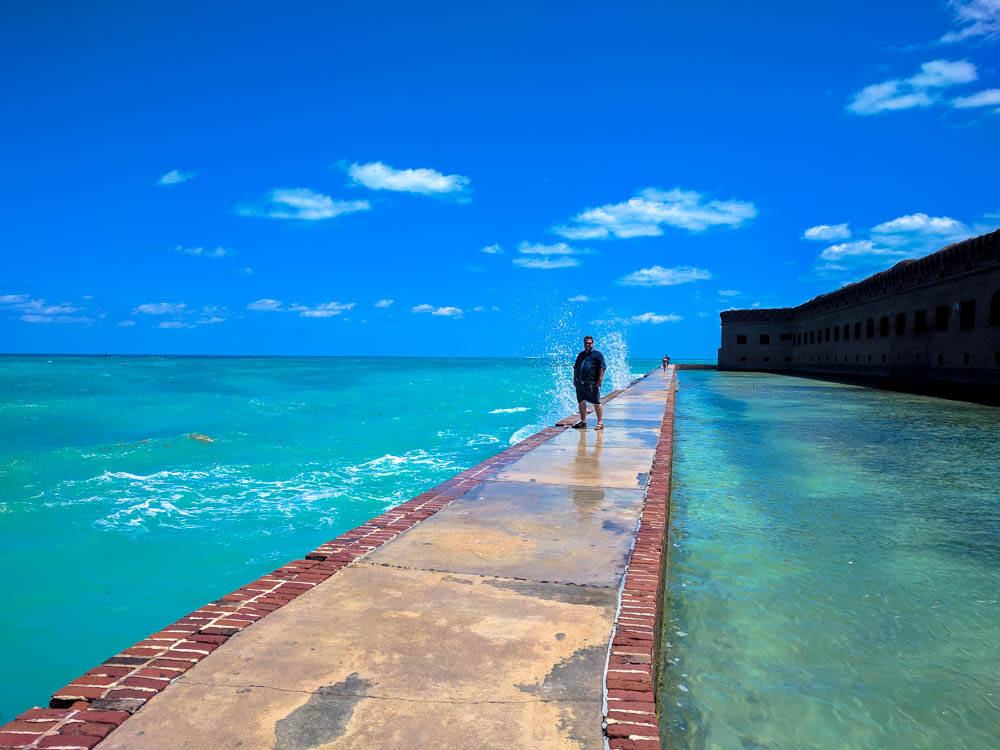
Along the Moat Trail

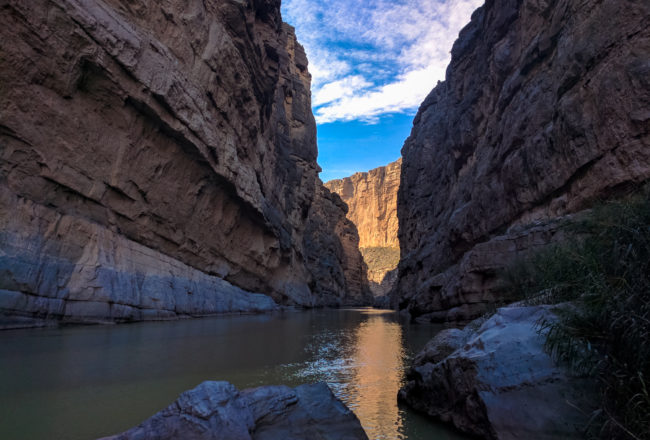
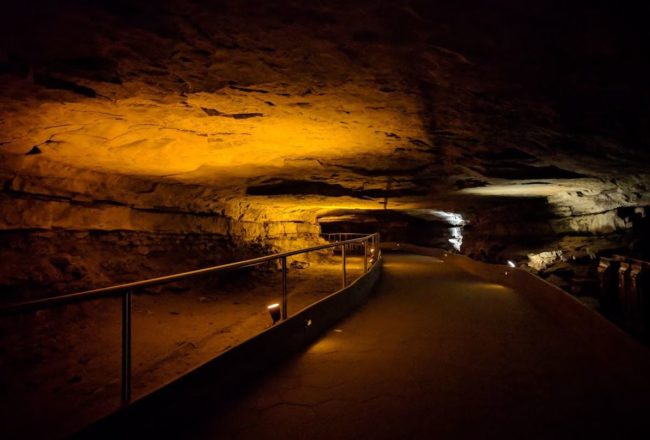
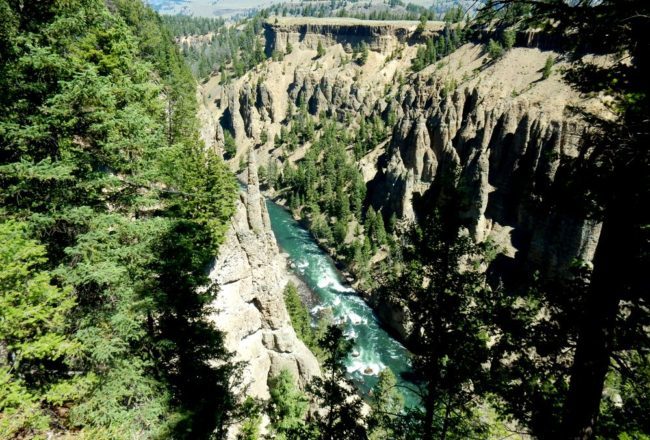


2 Comments
Love your approach. An honest commentary, interesting stories, and a little history peppered in to complete the flavor of your blogs. My wife and I are retired and are Picking up our airstream right after we close on our house, September 15th. We plan to hit a lot of the places that you both have traveled to. Keep up the good work.
Thanks Dennis! Congratulations on your new Airstream. If you have any questions about a place we’ve been, let me know! We’re happy to help. 🙂